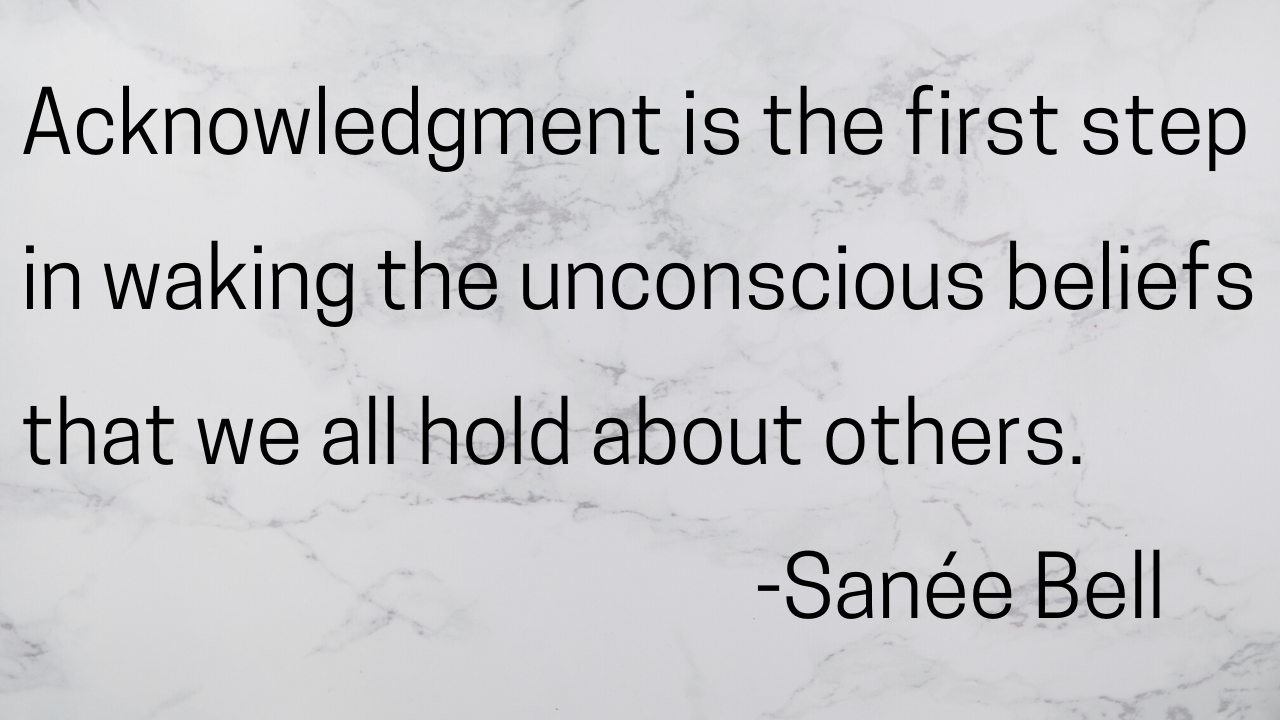Be a Champion for Equity
Jun 06, 2020
If we want to end racial injustice, we need to champion equity in our schools. Sure, this has been a conversation for many years, but we're still failing our students and society. In many cases, it's not for a lack of trying; more likely, it's because we don't fully grasp how to identify bias, create student culture, and how to fight to eliminate inequity.
School leader Sanée Bell addresses these issues in Chapter 6 of Be Excellent on Purpose:
Identify your bias.
Be brave and acknowledge that you have a bias. Acknowledgment is the first step in waking the unconscious beliefs that we all hold about others. Take a moment to take the Implicit Association Test, which was developed by professors from the University of Washington, University of Virginia, and Harvard University.
The purpose of this assessment is to learn about the bias we hold as it relates to groups of people and ideas. Many times, people are afraid to say what they really believe about others, or they may be completely unaware of what they believe to be true.
Once you identify your bias, make a commitment to challenge and change your thinking. Explore ways to engage with others from different backgrounds.
Read and study the history of different cultures. Be vulnerable and immerse yourself in learning about others.
Become a student of culture.
It is common in our society for people to immediately think about race and ethnicity when we hear the word “culture.” Culture is not race. In fact, there is much more to us than our race and ethnicity. Unfortunately, society has used the social construct of race to sort and divide groups of people, and because of that, we may have limited knowledge and beliefs about people who are different from us.
Learn about the values, social norms, beliefs, and practices of others. Broaden your circle. If everyone around you looks like you and has similar include in your circle. If we don’t challenge our beliefs by understanding the culture of others, then it doesn’t matter what systems, pedagogy, or curriculum we put into place.
There is nothing wrong with the brains of our students, but unless we examine the culture in which the brains are learning, we are setting ourselves and our students up for unnecessary struggle and setbacks.
Be genuinely interested in experiences that are not your own. There is more to the world than your perspective, and when we recognize this, we can begin to view the world from a different set of eyes.
Understand the community and children you serve and don’t make excuses for things you don’t know or understand. Be intentional when extending your connections so that they meet the areas of growth you are exploring.
Fight to eradicate inequity.
I believe the biggest challenge principals face today is the fight to eradicate inequity. We have been using standardized testing to sort and separate children for two centuries, and we have been “reforming” public education for years by making sure we don’t become a nation at risk by leaving children behind, as we race to the top to ensure that every child succeeds.
However, through all these things, the issue of equity for all still remains. The battle for equity fuels my passion as a leader. For many students, their only chance at a better life is through receiving a quality education. External forces such as policy mandates without funding, implicit bias, low expectations, the political climate, and racial and social injustice all manifest themselves in the schoolhouse each day.
Through all of those issues, leaders are responsible for ensuring that students are receiving an exceptional education in a supportive environment that promotes equity for all. There is no silver bullet to solving inequity issues.
The only way to help leaders with this cause is to be a champion for all kids. In order to change the narrative of this story, each leader must be courageous in the settings in which they are charged with leading.
When we see inequity, we must call it out for what it is. We can’t remain silent. We must be a voice for the voiceless and an advocate for those who can’t or don’t know how to advocate for themselves. We must give hope to the hopeless. Inequity is robbing students of the best experiences they could ever have, if we are not courageous about addressing it when we see inequity in education.
Even if we have students or teachers who don’t believe in themselves, we must always believe in the possibility and potential of every teacher and every student. Being courageous and hopeful won’t amount to anything if we don’t move beyond the conversation.
We must put feet to our words by developing plans that intentionally challenge, address, and eradicate inequity. If it is important to us, we will find a way to ensure that all students have a safe, supportive, equitable environment to thrive academically, socially, and emotionally. If not, this conversation will continue.
You decide. The choice is yours.






